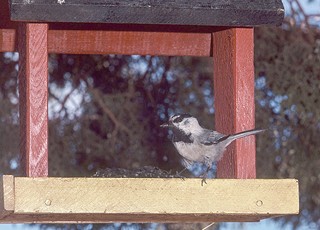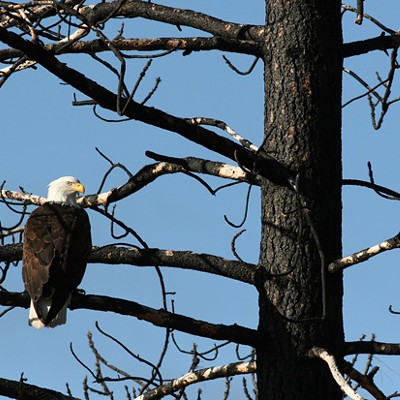It's seems like just yesterday that the Christmas Bird Count (CBC) and then the Ft. Rock/Christmas Valley Raptor Count, plus several other "counts" have taken place, and now for those who want to—or have to—stay at home and look at birds out the window, here comes the Great Backyard Bird Count (GBBC).
This one is carried out—literally—in your backyard, and is really special. The kids can get in on it with a bird-coloring contest, you can introduce a new pal to the joy of birds, and it's on Valentine's Day weekend, February 13-16.
Your backyard will be the place to begin. This year Jennifer Curtis, manager of the Sunriver Nature Center, and Jennifer Lair of Wild Birds Unlimited in Bend have set up a really neat coloring contest for kids that will find awards going to the kids who come up with the most eye-catching art.
So give Mother Nature a valentine this year and show how much you care about birds by counting them for the GBBC. This is the 18th annual count where anyone in the world can count birds at any location for at least 15 minutes on one or more days of the count and enter their sightings at: BirdCount.org or stop by Wild Birds Unlimited or the Sunriver Nature Center.
The information gathered by tens of thousands of volunteers helps track changes in bird populations on a massive scale. The GBBC is a joint project of the Cornell Lab of Ornithology and the National Audubon Society, with partners Bird Studies Canada and Wild Birds Unlimited.
"This may also be a big year for finches," notes Audubon Chief Scientist Gary Langham. "GBBC participants in North America should be on the lookout for larger numbers of pine siskins and redpolls. These birds also push farther south when pine cone seed crops fail in the far north of Canada."
Of interest this year are the sudden appearances of huge flocks of pine siskins at feeders throughout Central Oregon. The influx began about three weeks ago when I looked out one morning and observed about 150 siskins intermingling with lesser goldfinches, their close relatives that I see all year at my feeders.
Bird watchers from 135 countries participated in the 2014 count, documenting nearly 4,300 species on more than 144,000 bird checklists—that's about 43 percent of all the bird species in the world! In addition to the United States and Canada, India, Australia, and Mexico led the way with the greatest number of checklists submitted.
The Sunriver Nature Center (SNC) is also offering bird walks on Feb. 14, from 8:30 to 10 am, and again at 10:30 am to noon. If you take the early bird walk, then you can participate in the bird feeder building activity at the SNC from 10 am to noon.
And to make the bird sightings more competitive, the SNC is also holding a contest for the greatest number of birds listed. For more details on that side activity, go to: sunrivernaturecenter.org, or contact the staff at 541-593-4394.
"We especially want to encourage people to share their love of birds and bird watching with someone new this year," says Dick Cannings at Bird Studies Canada. "Take your sweetheart, a child, a neighbor, or a coworker with you while you count birds for the GBBC. Share your passion and you may fledge a brand new bird watcher."
The Great Backyard Bird Count is a great way for people of all ages and backgrounds to connect with nature and show their love for the birds this Valentine's Day. Participation is free and easy.
For the GBBC, you will need:
• eBird, or Birdlog GBBC
• Data recording sheets
• Active feeder station(s) with suet and/or seeds
• Coloring sheet
• Register with GBBC to input data online
• Binoculars
• Bird ID app or field guide
Bird counts, all of them—whether in the United States or worldwide—are an important tool in bird conservation. From the data collected ornithologists (bird scientists) will be able to determine trends in populations. From these trends, they are able to pick up on declines in specific species, or on the other side of the slate, increases that can mean almost anything.
Other aspecs of bird counts are the opportunities for the participants to get together to talk birds and the many other facets of nature that are attached to the welfare of birds, and what the participants have in common. Some, if not many, of these get-togethers develop into lifetime friendships—some that have ended up in marriages, kids and grandkids, all who are watching and counting birds.

























